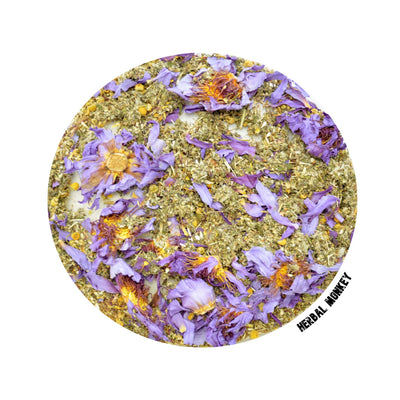
Discover the benefits of Blue Lotus & Mugwort Tea and how it can enhance your herbal tea experience.
Blue Lotus & Mugwort Tea is a unique herbal tea blend that combines the dried flowers of the Blue Lotus plant (Nymphaea caerulea) with the leaves of the Mugwort plant (Artemisia vulgaris). Both plants have a long history of use in various cultures for their therapeutic properties.
Blue Lotus, also known as the Sacred Lily of the Nile, was revered by the ancient Egyptians for its psychoactive effects. It was often used in religious ceremonies and as a natural remedy for anxiety and stress. Mugwort, on the other hand, has been used in traditional Chinese medicine for centuries to treat digestive issues, insomnia, and menstrual cramps.
The combination of Blue Lotus and Mugwort creates a tea that is both relaxing and stimulating. It can help promote a sense of calm and relaxation, while also providing mental clarity and focus. The unique blend of these two plants makes Blue Lotus & Mugwort Tea a popular choice among herbal tea enthusiasts.
Blue Lotus & Mugwort Tea offers a range of health benefits due to the medicinal properties of its ingredients.
1. Relaxation and Stress Relief: Both Blue Lotus and Mugwort have calming properties that can help reduce stress and anxiety. Drinking this tea can promote relaxation and provide a sense of tranquility.
2. Sleep Aid: Blue Lotus is known for its sedative effects, making it an excellent natural remedy for insomnia. Mugwort is also believed to promote restful sleep and alleviate sleep disorders.
3. Digestive Support: Mugwort has been traditionally used to improve digestion and relieve gastrointestinal discomfort. Drinking Blue Lotus & Mugwort Tea may help soothe digestive issues such as bloating and indigestion.
4. Mental Clarity and Focus: Blue Lotus contains compounds that can enhance cognitive function and improve mental clarity. Mugwort is also thought to stimulate brain activity and improve concentration.
5. Anti-inflammatory Properties: Both Blue Lotus and Mugwort have anti-inflammatory properties that can help reduce inflammation in the body. This can be beneficial for individuals with chronic inflammatory conditions.
It's important to note that while Blue Lotus & Mugwort Tea has many potential health benefits, it should not replace medical treatment or be used as a substitute for professional healthcare advice. If you have any underlying health conditions or are taking medication, it's always best to consult with a healthcare professional before incorporating this herbal tea into your routine.
Preparing Blue Lotus & Mugwort Tea is a simple and enjoyable process. Here's a step-by-step guide to help you make a perfect cup of this herbal tea:
1. Gather the ingredients: You will need dried Blue Lotus flowers and dried Mugwort leaves. These can be purchased from herbal stores or online.
2. Boil water: Bring a pot of water to a boil. The amount of water will depend on how many cups of tea you want to make.
3. Measure the herbs: For each cup of tea, use 1 teaspoon of dried Blue Lotus flowers and 1 teaspoon of dried Mugwort leaves. Adjust the amount according to your taste preferences.
4. Steep the tea: Place the dried Blue Lotus flowers and Mugwort leaves in a tea infuser or a teapot with a built-in strainer. Pour the boiling water over the herbs and let them steep for 5-10 minutes.
5. Strain and enjoy: After steeping, remove the tea infuser or strain the tea to remove the herbs. Pour the tea into a cup and enjoy it hot. You can also add honey or lemon to enhance the flavor if desired.
Remember to store the remaining dried Blue Lotus flowers and Mugwort leaves in an airtight container to maintain their freshness and potency. Experiment with steeping times and herb ratios to find your preferred strength and flavor.
Blue Lotus & Mugwort Tea can be purchased from various sources, both online and offline.
1. Herbal Stores: Visit your local herbal stores or health food stores to find Blue Lotus & Mugwort Tea. They may carry a selection of herbal teas, including this unique blend.
2. Online Retailers: There are many online retailers that specialize in herbal teas and natural remedies. Browse through websites such as Amazon, Etsy, or specialized herbal tea shops to find Blue Lotus & Mugwort Tea.
3. Herbal Tea Brands: Some well-known herbal tea brands may offer Blue Lotus & Mugwort Tea as part of their product range. Check their websites or contact them directly to inquire about availability.
When purchasing Blue Lotus & Mugwort Tea, ensure that the product is made from high-quality, organic ingredients. Read customer reviews and check for certifications to ensure you are getting a reliable and authentic product.
Blue Lotus & Mugwort Tea is a unique herbal tea blend that offers a range of health benefits. Whether you're looking to relax, improve your sleep, support digestion, enhance mental clarity, or reduce inflammation, this tea can be a valuable addition to your daily routine.
Remember to always consult with a healthcare professional before incorporating any new herbal tea or supplement into your routine, especially if you have any underlying health conditions or are taking medication.
Enjoy the soothing and rejuvenating effects of Blue Lotus & Mugwort Tea and experience the wonders of this ancient herbal blend.
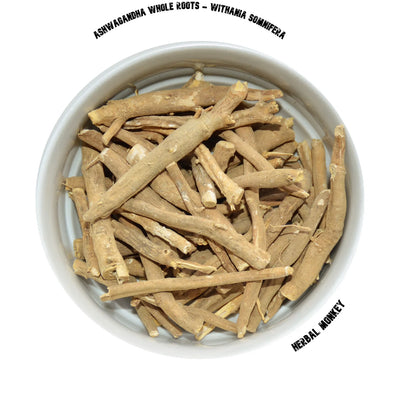
Discover the various ways you can incorporate Ashwagandha root into your daily routine to reap its full health benefits.
Ashwagandha root, also known as Withania somnifera, is a popular herb in Ayurvedic medicine. It has been used for centuries to promote overall health and well-being.
The root of the Ashwagandha plant contains several bioactive compounds that contribute to its beneficial properties. These include alkaloids, steroidal lactones (withanolides), and saponins.
Ashwagandha root is known for its adaptogenic properties, which means it helps the body adapt to stress and promotes a state of balance. It is also believed to have antioxidant, anti-inflammatory, and immune-modulating effects.
Some of the potential benefits of Ashwagandha root include reducing stress and anxiety, improving cognitive function, boosting energy levels, enhancing athletic performance, and supporting reproductive health.
Before incorporating Ashwagandha root into your wellness routine, it is important to understand its potential benefits and how it may interact with any existing health conditions or medications you may be taking.
Ashwagandha root is available in various forms, allowing you to choose the one that best suits your preferences and needs.
1. Powder: Ashwagandha root powder is made by drying and grinding the root. It can be easily added to smoothies, teas, or other beverages.
2. Capsules: Ashwagandha root capsules provide a convenient way to incorporate the herb into your daily routine. They are available in different strengths, allowing you to adjust the dosage as needed.
3. Tincture: Ashwagandha root tincture is a concentrated liquid extract. It can be taken directly or added to water or juice.
4. Tea: Ashwagandha root tea is made by steeping the dried root in hot water. It offers a soothing and calming way to enjoy the benefits of the herb.
Choose the form of Ashwagandha root that is most convenient for you and aligns with your personal preferences.
There are several methods you can use to incorporate Ashwagandha root into your daily routine.
1. Adding to beverages: You can mix Ashwagandha root powder or tincture into your favorite beverages, such as smoothies, herbal tea, or juice.
2. Taking capsules: If you prefer a more standardized dosage, Ashwagandha root capsules are a convenient option. Simply follow the recommended dosage instructions on the packaging.
3. Creating infused oils: Ashwagandha root can be infused into carrier oils, such as coconut or olive oil, to create a nourishing oil that can be used for massages or skincare.
4. Incorporating into recipes: Ashwagandha root powder can be added to various recipes, such as energy balls, homemade granola bars, or even savory dishes like curries.
Experiment with different methods to find the one that works best for you and fits seamlessly into your lifestyle.
While Ashwagandha root is generally considered safe for most people when taken in appropriate doses, it may cause some side effects or interact with certain medications.
1. Allergic reactions: Some individuals may be allergic to Ashwagandha root. If you experience any signs of an allergic reaction, such as rash, itching, or swelling, discontinue use and seek medical attention.
2. Gastrointestinal issues: Ashwagandha root may cause gastrointestinal discomfort in some individuals, such as stomach upset, diarrhea, or nausea. If you experience these symptoms, reduce the dosage or discontinue use.
3. Drug interactions: Ashwagandha root may interact with certain medications, including immunosuppressants, sedatives, and thyroid medications. It is important to consult with your healthcare provider before starting Ashwagandha supplementation.
If you are pregnant, breastfeeding, or have any underlying health conditions, it is especially important to seek medical advice before using Ashwagandha root.
Remember, it is always best to consult with a healthcare professional to determine the appropriate dosage and ensure it is safe for your individual needs.
Now that you have a better understanding of Ashwagandha root and its various forms and methods of use, you can start incorporating it into your wellness routine.
1. Start with a low dosage: If you are new to Ashwagandha, it is recommended to start with a low dosage and gradually increase it as your body adjusts.
2. Choose a form that suits you: Consider your preferences and lifestyle when selecting the form of Ashwagandha root. Whether it's capsules, powder, tincture, or tea, choose the one that aligns with your routine.
3. Determine the best time to take it: Some individuals prefer taking Ashwagandha in the morning to boost energy levels, while others find it more helpful in the evening to promote relaxation and restful sleep. Find the time that works best for you.
4. Be consistent: To experience the full benefits of Ashwagandha root, it is important to incorporate it into your routine consistently. Set a reminder or find a daily ritual that helps you remember to take it.
Always listen to your body and adjust the dosage or method of use as needed. If you have any concerns or questions, consult with a healthcare professional for personalized guidance.
Incorporating Ashwagandha root into your daily routine can help support your overall health and well-being, providing you with the maximum benefits it has to offer.
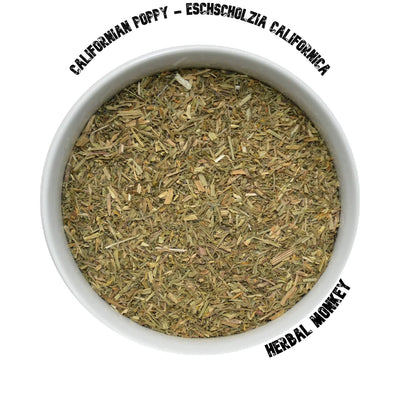
Discover the soothing effects of Californian Poppy in relieving anxiety naturally.
Anxiety is a common mental health condition that affects millions of people worldwide. It is characterized by feelings of unease, worry, and fear that can be overwhelming and interfere with daily life. Anxiety can manifest in different ways, such as generalized anxiety disorder, panic disorder, social anxiety disorder, and specific phobias. The impact of anxiety can be far-reaching, affecting not only the individual's mental and emotional well-being but also their physical health, relationships, and overall quality of life.
Living with anxiety can be challenging, as it may lead to constant feelings of tension, restlessness, and a sense of impending doom. It can also cause sleep disturbances, difficulty concentrating, and irritability. Understanding anxiety and its impact is crucial in order to seek appropriate treatment and find effective ways to manage and alleviate symptoms.
Californian Poppy, also known as Eschscholzia californica, is a flowering herb native to California. It has long been used in traditional medicine for its calming and sedative properties. The herb contains alkaloids and other compounds that have been found to have anxiolytic (anti-anxiety) effects.
Research suggests that Californian Poppy may help reduce anxiety symptoms by promoting relaxation and improving sleep quality. It is believed to work by increasing the levels of neurotransmitters like gamma-aminobutyric acid (GABA) in the brain, which has a calming effect on the nervous system.
Californian Poppy is available in various forms, including tinctures, capsules, and teas. It can be used as a natural remedy to alleviate anxiety symptoms and promote a sense of calm and relaxation. However, it is important to note that while Californian Poppy is generally considered safe for short-term use, it may not be suitable for everyone. It is always recommended to consult with a healthcare professional before incorporating any new herbal remedy into your routine.
If you are interested in trying Californian Poppy as a natural remedy for anxiety, here are some ways to incorporate it into your routine:
- Tinctures: Tinctures are concentrated liquid extracts of Californian Poppy. They can be taken orally by adding a few drops to water or juice. Follow the recommended dosage instructions on the product.
- Capsules: Californian Poppy is also available in capsule form. Take as directed on the packaging.
- Teas: You can brew Californian Poppy tea by steeping the dried herb in hot water for about 10 minutes. Strain and drink the tea before bedtime for its relaxing effects.
- Topical applications: Some herbal creams and ointments containing Californian Poppy extract can be applied to the skin for localized relief of muscle tension and pain.
Remember, it is important to follow the recommended dosage instructions and consult with a healthcare professional before starting any new herbal remedy.
While Californian Poppy is generally considered safe for short-term use, it may cause side effects in some individuals. Common side effects may include drowsiness, dizziness, and headache. If you experience any adverse reactions, discontinue use and consult with a healthcare professional.
It is important to note that Californian Poppy should not be used by pregnant or breastfeeding women, as its safety in these populations has not been established. Additionally, it may interact with certain medications, such as sedatives and antidepressants. Always inform your healthcare provider about any herbal supplements or remedies you are taking.
As with any herbal remedy, it is best to start with a low dose and observe how your body responds before increasing the dosage. If you have any underlying health conditions or concerns, it is recommended to seek guidance from a healthcare professional before using Californian Poppy.
Californian Poppy offers a natural remedy for anxiety, providing a soothing and calming effect on the nervous system. While it may not be a miracle cure, it can be a valuable addition to a comprehensive approach to managing anxiety.
Remember, it is important to understand anxiety and its impact, seek professional guidance, and explore various strategies for managing anxiety. Californian Poppy can be a helpful tool in your anxiety management toolkit, but it is not a substitute for professional medical advice or treatment.
If you are considering using Californian Poppy for anxiety, consult with a healthcare professional to ensure it is safe and suitable for you. They can provide personalized recommendations and help you navigate the world of herbal remedies.
Embrace the calm with Californian Poppy and take proactive steps towards finding relief from anxiety naturally.
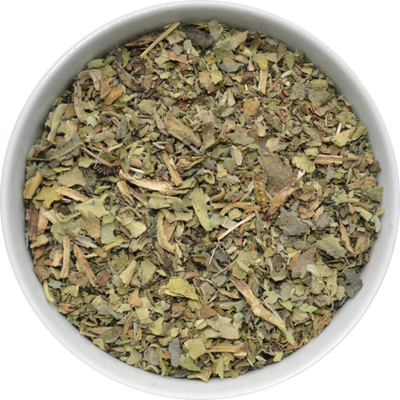
Discover the soothing and healing benefits of Mullein Leaf tea with these delicious recipes that promote overall wellness.
Mullein Leaf tea offers a wide range of benefits for your overall health and wellness. It is known for its soothing and healing properties, making it a popular choice for herbal tea enthusiasts. Some of the key benefits of Mullein Leaf tea include:
- Relieving respiratory issues: Mullein Leaf tea has been traditionally used to alleviate respiratory conditions such as coughs, bronchitis, and asthma. It helps to soothe the airways and reduce inflammation, making it easier to breathe.
- Soothing sore throat: If you're experiencing a sore throat, Mullein Leaf tea can provide relief. It has natural anti-inflammatory properties that can help reduce pain and irritation in the throat.
- Supporting immune system: Mullein Leaf tea is rich in antioxidants, which help to strengthen the immune system and protect the body against harmful free radicals. Drinking this tea regularly can help boost your overall immunity.
- Promoting healthy digestion: Mullein Leaf tea has mild laxative properties that can aid in digestion and relieve constipation. It also has anti-inflammatory effects on the digestive system, reducing discomfort and bloating.
With all these wonderful benefits, incorporating Mullein Leaf tea into your daily routine can contribute to your overall well-being.
If you're looking for a refreshing and invigorating tea recipe, try the Mullein and Mint Tea. This combination not only tastes great but also offers additional health benefits.
Here's how you can make it:
Ingredients:
- 1 tablespoon of dried Mullein leaves
- 1 tablespoon of fresh or dried Mint leaves
- 2 cups of water
Instructions:
1. Boil the water in a saucepan.
2. Add the Mullein and Mint leaves to the boiling water.
3. Reduce the heat and let it simmer for about 10 minutes.
4. Remove from heat and strain the tea.
5. You can add honey or lemon for taste, if desired.
Enjoy this refreshing Mullein and Mint Tea as a soothing beverage or as a part of your wellness routine.
Boost your immune system with this delicious Mullein and Ginger Tea recipe. Ginger is known for its immune-boosting properties, and when combined with Mullein Leaf, it creates a powerful blend.
Here's how you can make it:
Ingredients:
- 1 tablespoon of dried Mullein leaves
- 1 tablespoon of freshly grated Ginger
- 2 cups of water
Instructions:
1. Bring the water to a boil in a saucepan.
2. Add the Mullein leaves and freshly grated Ginger to the boiling water.
3. Reduce the heat and let it simmer for about 15 minutes.
4. Strain the tea to remove any solids.
5. You can add honey or lemon to enhance the flavour, if desired.
Sip on this immune-boosting Mullein and Ginger Tea to support your overall health and well-being.
Unwind and relax with a cup of Mullein and Chamomile Tea. This soothing blend is perfect for unwinding after a long day and promoting a calm state of mind.
Here's how you can make it:
Ingredients:
- 1 tablespoon of dried Mullein leaves
- 1 tablespoon of dried Chamomile flowers
- 2 cups of water
Instructions:
1. Boil the water in a saucepan.
2. Add the Mullein leaves and Chamomile flowers to the boiling water.
3. Let it steep for about 10 minutes.
4. Strain the tea and discard the solids.
5. Add honey or a natural sweetener if desired.
Indulge in the relaxing aroma and flavour of Mullein and Chamomile Tea to promote tranquillity and relaxation.
Need a boost of energy? Try the invigorating Mullein and Lemon Tea recipe. The citrusy flavour of lemon combined with Mullein Leaf creates a revitalizing beverage to kickstart your day.
Here's how you can make it:
Ingredients:
- 1 tablespoon of dried Mullein leaves
- Juice of 1 lemon
- 2 cups of water
Instructions:
1. Bring the water to a boil in a saucepan.
2. Add the Mullein leaves to the boiling water.
3. Reduce the heat and let it simmer for about 10 minutes.
4. Remove from heat and allow it to cool slightly.
5. Add the freshly squeezed lemon juice to the tea.
6. You can sweeten it with honey or a natural sweetener, if desired.
Enjoy the refreshing and energizing qualities of Mullein and Lemon Tea to start your day on a positive note.
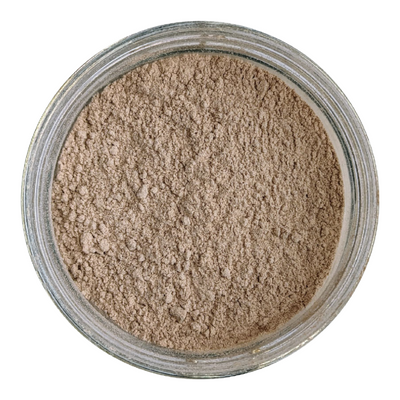
Discover the benefits and uses of Siberian Ginseng powder in this informative blog post.
Siberian Ginseng, also known as Eleutherococcus senticosus, is a plant native to Northeastern Asia, particularly in regions such as Russia, China, Japan, and Korea.
For centuries, Siberian Ginseng has been used in traditional medicine practices to promote overall health and well-being.
Historically, Siberian Ginseng was used as an adaptogen, a substance that helps the body adapt to stress and promotes balance.
It was believed to enhance physical performance, increase endurance, and improve mental clarity and focus.
In recent years, Siberian Ginseng has gained popularity for its potential health benefits and as a natural remedy for various ailments.
Siberian Ginseng powder is rich in antioxidants, which help protect the body against free radicals and oxidative stress.
It may support the immune system and help prevent infections and diseases.
Some studies suggest that Siberian Ginseng powder may improve cognitive function, memory, and concentration.
It may also have anti-inflammatory properties, which could benefit individuals with chronic inflammatory conditions.
Additionally, Siberian Ginseng powder may help reduce fatigue, enhance physical performance, and increase energy levels.
There are several ways to incorporate Siberian Ginseng powder into your daily routine:
- Add it to your morning smoothie or juice for an energy boost.
- Mix it into your favorite herbal tea for a revitalizing beverage.
- Sprinkle it over your breakfast cereal or yogurt for added nutrients.
- Use it as an ingredient in homemade energy bars or protein balls.
Remember to start with a small dosage and gradually increase it as needed, following the recommended guidelines.
While Siberian Ginseng is generally considered safe for most people, it may cause certain side effects and interact with certain medications.
Common side effects may include mild digestive issues, such as diarrhea or stomach discomfort.
If you have any underlying health conditions or take medications, it is important to consult with your healthcare provider before using Siberian Ginseng powder.
Additionally, pregnant or breastfeeding women should avoid using Siberian Ginseng powder.
It is also recommended to avoid long-term use of Siberian Ginseng powder without breaks to prevent potential side effects.
When purchasing Siberian Ginseng powder, it is important to choose a reputable supplier that offers high-quality products.
You can find Siberian Ginseng powder at health food stores, specialty stores, and online retailers.
Read customer reviews, check for certifications or quality seals, and ensure that the product is sourced from a trusted supplier.
It is also advisable to consult with a healthcare professional or herbalist for recommendations on brands or specific products.
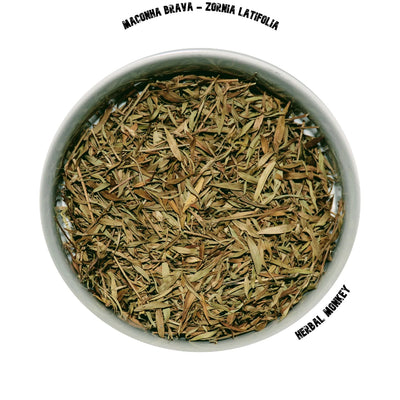
Discover the benefits and uses of Maconha Brava leaf in this informative blog post.
Maconha Brava is a plant native to South America, particularly Brazil. It is known for its psychoactive properties and has been used for centuries by indigenous tribes for various purposes.
The plant belongs to the family Asteraceae and is scientifically known as Zornia latifolia. It is characterized by its small yellow flowers and leaves that resemble those of the cannabis plant.
Maconha Brava is often used in traditional medicine and is believed to have sedative, analgesic, and calming effects. It is commonly consumed as a tea or smoked for its psychoactive properties.
Maconha Brava leaf has a long history of traditional use in South America. Indigenous tribes have used it for various purposes, including:
- Relieving anxiety and stress
- Promoting relaxation and sleep
- Easing menstrual cramps
- Alleviating pain and inflammation
The leaf is often prepared as a tea or smoked to achieve these effects. It is believed to have sedative and calming properties, making it a popular choice for relaxation and stress relief.
Maconha Brava leaf is believed to offer several health benefits, including:
- Anxiety relief: The plant has calming properties that may help reduce symptoms of anxiety and promote relaxation.
- Pain management: Maconha Brava leaf is thought to have analgesic effects, making it potentially beneficial for managing pain and inflammation.
- Sleep aid: Due to its sedative properties, Maconha Brava leaf is often used as a natural sleep aid to promote restful sleep.
It's important to note that further research is needed to fully understand the potential health benefits of Maconha Brava leaf and its effects on the body.
There are different ways to use Maconha Brava leaf, depending on the desired effects:
- Tea: The most common method is to prepare Maconha Brava leaf as a tea. To make the tea, steep the dried leaves in hot water for about 10-15 minutes. Strain the liquid and drink it.
- Smoking: Some people choose to smoke Maconha Brava leaf for its psychoactive effects. The dried leaves can be rolled into a joint or used in a pipe.
It's important to note that Maconha Brava leaf should be used responsibly and in moderation. It is always recommended to consult with a healthcare professional before using any herbal remedies.
Maconha Brava leaf can be found in select herbal stores or online retailers that specialize in medicinal herbs. When purchasing Maconha Brava leaf, it's important to ensure that you are sourcing it from a reputable and trusted supplier.
Always look for organic and sustainably sourced products to ensure the highest quality. Additionally, consider reading customer reviews and checking for certifications or third-party testing to ensure the authenticity and purity of the product.
It's important to note that the sale and use of Maconha Brava leaf may be restricted in certain countries or regions. Make sure to familiarize yourself with the legal regulations regarding Maconha Brava leaf in your area before making a purchase.